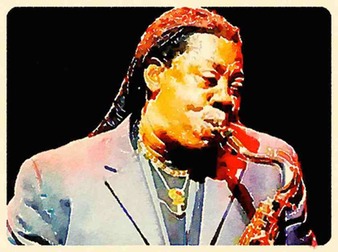Monday, 20 June 2011

It's ironic that news of the passing of 69-year-old E Street Band saxophoist Clarence Clemons arrived in the midst of rumours of a new Bruce Springsteen album and speculation as to whether it would feature the E Street Band or show new material in a different setting. On the strength of The Ghost of Tom Joad, Devils and Dust and The Seeger Sessions it's possible to imagine Springsteen without the E Street Band, but I find it impossible to imagine the E Street Band without Clarence Clemons.
While Clemons had worked in other settings with, among others, Ringo Starr, Jackson Browne, Aretha Franklin and Lady Gaga, it's hard to imagine any of that happening if it hadn't been for a legendary encounter on the Jersey Shore that may or may not have happened quite the way the participants tell it, but if it didn't go down that way it should have.
Actually, the way it should have been factor goes well back before that. A much younger Clarence allegedly wanted an electric train set for Christmas but his fish merchant father bought him an alto sax and arranged lessons. Forced to practice in the back room of the fish shop while his peers were playing baseball, Clarence wasn't a happy camper but switched to baritone for a stint in his high school's jazz band before his uncle gave him a record by R&B tenor player King Curtis. which didn't quite seal his fate, but was a vital factor in the way things turned out.
A music and football scholarship took Clemons to college in Maryland and a sociology major landed him a job in Newark, New Jersey counselling disturbed youths. In the bars and clubs along the Jersey Shore he worked with bands like Norman Seldin and the Joyful Noyze before the dark and stormy night that took him from the Wonder Bar to a place called The Student Prince, where he sat in with a scrawny kid called Bruce Springsteen on Spirit in the Night. Whether the door actually blew off the club that night doesn't matter. If it didn't, it should have.
Anyone familiar the gatefold sleeves of the first two Springsteen albums, densely packed with lyrics in fine print can't help noticing the trimming down that occurred on Born to Run and subsequent albums, but after two less than spectacularly successful albums, number three was, to all intents and purposes, crunch time.